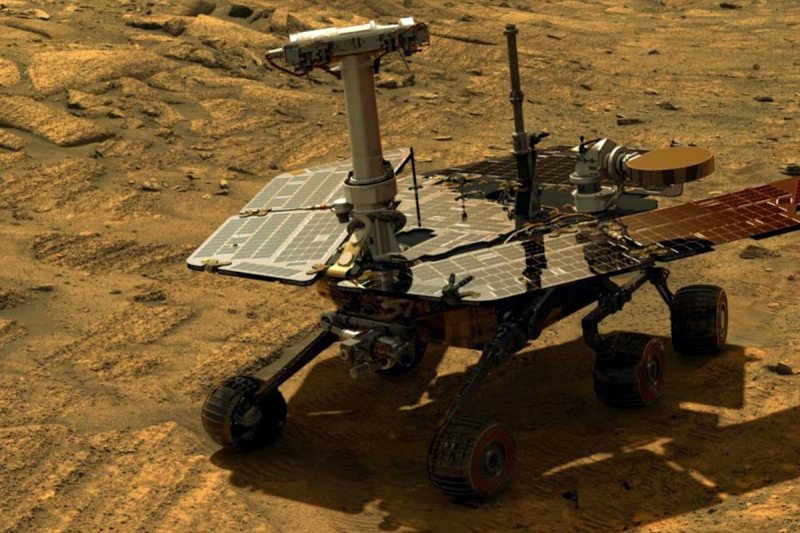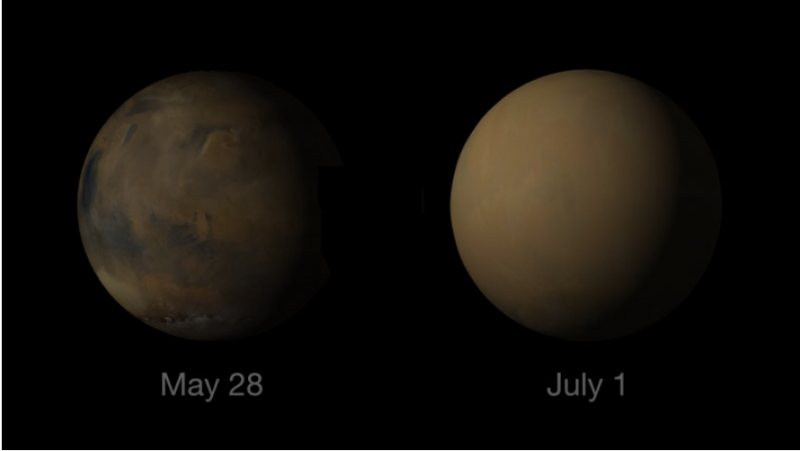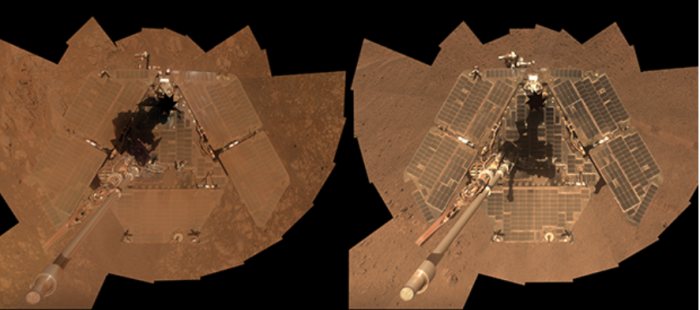
Image: NASA
Is this the end for the plucky little solar powered Mars rover Opportunity? Even if it has bit the dust, Opportunity has given far more than was originally expected of it.
Nothing has been heard from NASA’s Opportunity rover since June 10 when a dust storm encircled Mars, cutting off the fuel source for the exploration vehicle – the sun.

Image: NASA
“Opportunity has likely experienced a low-power fault and perhaps, a mission-clock fault. Additionally, the up-loss timer has also since expired, resulting in another fault condition,” stated the mission team.
The low power fault causes the rover to go into hibernation and the mission clock tells the rover when it should be attempting to communicate. However, Opportunity can use cues such as increasing sunlight to make assumptions about the time.
The team believes the massive dust storm is now starting to abate and soon Opportunity may be able to start recharging – assuming its solar panels aren’t totally covered in a thick layer of dust. Such situations have happened before, but wind driven cleaning events have blown the dust off.

Before and after solar panel cleaning event | Image: NASA
If initial contact is made by Opportunity, it could then be some weeks before it pings NASA a second time. The team likens the situation to a patient coming out of a coma.
Once Opportunity’s systems are in a position to provide information on status, the team will then take stock of the condition of the rover’s battery, solar cells and other systems.
Hearing back from the rover provides no guarantees of its ongoing viability.
“The rover’s batteries could have discharged so much power — and stayed inactive so long — that their capacity is reduced,” says the mission team. “If those batteries can’t hold as much charge, it could affect the rover’s continued operations. It could also mean that energy-draining behavior, like running its heaters during winter, could cause the batteries to brown out.”
While such a situation would be disappointing, it’s not as though Opportunity hasn’t provided good bang for buck.
Opportunity landed on Mars on in January 2004 for a mission that was expected to last for just over 92 Earth days – and it has soldiered on for more than 14 years. In February this year, Opportunity saw is 5,000th Martian dawn. It has made a bunch of very interesting discoveries, some of which can be viewed here.
The mission has not only been a testament to NASA know-how but also to the resilience of solar power and lithium-ion battery technology in what is an incredibly harsh environment.

 RSS - Posts
RSS - Posts



The fact that Opportunity has gone silent just makes me think t might be planning something…
https://xkcd.com/1504/